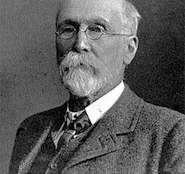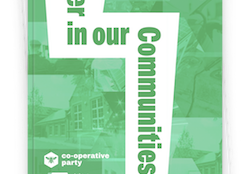Enforced academisation is not the only way to transform attainment. Co-operative schools raise attainment from within, rather than through the government’s preferred options of involving charities, businesses and for-profit providers.
Meanwhile, the co-operative multi-trust model, where a number of schools team up to form a co-operative trust and share resources and expertise, is becoming increasingly popular. Unlike the government, member schools believing that sustainable improvement and community engagement is best secured by co-operation rather than competition.
Here are a number of case studies of co-operative schools and trusts.
Burnt Mill School, Harlow
Three years ago, just 27 per cent of students at Burnt Mill School in Harlow, Essex achieved five good grades, including English and Maths, at GCSE level.
Since Burnt Mill became a co-operative trust school in 2010 (it is now a co-operative Academy, having converted last year), the leap in students’ attainment has been dramatic. In 2012, 72 per cent of students achieved the target of five good GCSEs including English and Maths.
Headteacher Helena Mills believes this is a direct demonstration of how the co-operative values can impact on attainment.
“We would attribute the success to the fact that the co operative values of equality and solidarity inform everything we do in the school,” says Mills. “We have not necessarily done one thing as an Academy but have taken many steps to ensure we achieve equality of opportunity. The results are improved because all my teachers and support staff are committed to ensuring that young people from all backgrounds achieve above expectations.”
Burnt Mill is in an area of high deprivation, with large numbers of white working class students, and the school has implemented several changes to help all groups of learners achieve.
Mills explains: “We set very challenging targets for students and expect all groups of learners to make four levels progress, not three. We ensure we prepare lessons that take into consideration the needs and backgrounds of young people. Our interventions are targeted at particular groups, for example FSM [students receiving free school meals], and we track students very carefully.”
Central to the co-operative model is involving key stakeholders in running the school, from students and parents or carers to members of the local community. It’s a way of ensuring that schools are democratically accountable to the communities they serve.
Burnt Mill has embraced the model, and is reaping the benefits. “Our engagement with the community and parents, such as using ambassadors from the community and running parental workshops to ensure that parents can support students at home, has been instrumental,” says Mills.
“Instrumental” us also the word Mills uses to describe the support the school received from the Co-operative College. She explains: “When everybody had given up on the school and was ready to send us down sponsored academy route, the College came and supported me in challenging DfE meetings. I think it is an essential part of our success.”
Passmores Academy, Essex
Another co-operative school which has seen a dramatic increase in results is Passmores Academy in Harlow, Essex, which became a co-operative Academy in September 2011. In 2012, the school celebrated a marked rise in its results from 50 per cent of students achieving five good GCSEs, including English and Maths, to 66 per cent.
However, the school had a tough year, as principal Vic Goddard admits. “I am certain that we haven’t had as difficult a year as the last one in my career, due to the seemingly endless message that we are not doing a good enough job from those at the top, as well as the pressures that we have put on ourselves.”
Co-operative values have underpinned the school’s progress in delivering a child-centred education. “The young people have achieved at the level they have due to the partnership of students, staff and the community – or co-operation if you will,” says Goddard. “The values that drive our school, and that are written all over it, are those that have enabled staff and students to persevere when the going gets tough and to unlock the doors to their future.
“We start with honesty and openness as the basis of our ‘working’ relationships between staff and students. We are transparent with our students about where they are in their journeys and why we need them to behave in certain ways.
“The use and understanding of the data we hold on every individual young person is at the centre of all that we do and is not hidden from the students. This honesty and openness, more often than not, leads to an understanding by our young people that self-help and self-responsibility will be their keys to success, with our help along the way.
“As a school we accept that young people make mistakes, and that they learn from them by working together; that way we can create an environment where there is a strong collegial approach to helping our students overcome any barriers to their progress.”
The Tame Valley Co-operative Learning Trust
Six primary schools in Staffordshire have teamed up with the Tamworth Co-operative Society to form the Tame Valley Co-operative Learning Trust, believing that they can achieve more by working together than as individual schools.
The schools have clearly identified the benefits of the co-operative model.
“The values of the co-operative movement resonate with us and reflect our commitment to self-help, self-responsibility, democracy, equality, solidarity, honesty, openness, social responsibility and caring for others.
“We believe in the co-operative approach to engaging stakeholders and working together for the mutual benefit of our community. The co-operative schools model is also aligned with the Self-Improving Schools System vision of a national and local government.
“We have chosen to become a co-operative trust because these are the values and principles which we feel should underpin our work – with each other and with our young people.”
Through the trust, the schools believe they can improve the quality and consistency of teaching and raise aspirations among students, parents and staff, harnessing resources efficiently in the interests of learning and creating the right conditions for enjoyable, effective learning. This includes fostering creativity and innovation in young people through an exciting and challenging curriculum and creating a sense of local pride. The schools expect this to have knock-on effects on behaviour and attendance.
SENtient Trust, Devon
All 10 special educational needs schools in Devon have teamed up to create the SENtient Trust, the first co-operative multi-school Trust composed entirely of special schools.
The Trust model is attractive to specialist schools as it can help strengthen their provision by enabling groups of schools to access specialist resources, provide a student-centred education for all learners and give increased voice to students, both in school and the community.
At a time when the role and function of local authorities is being greatly and rapidly reduced, the Devon schools believe that Trust status will enable them to establish strong, long-term partnerships with key partners who can help increase resources and opportunities for staff and pupils. As well as partnering with the co-operative movement, the SENtient Trust is working with local children’s home Atkinson School, pupil referral units in central, south and north Devon and Devon Hospitals Short-Stay School.
Representatives from the schools say that adopting trust status formalises existing collaboration and working partnerships between the schools.
“Our schools have long worked together and with mainstream partner schools for mutual benefit,” they say. “Headteachers and teachers from our schools regularly meet together to share ideas and to receive training and, where possible, learners from our schools take part in activities organised by the schools working together.
“These approaches have helped our schools to improve by sharing best practice. Working together has also helped us to develop a common set of aims and values.”
Furthermore, adopting the co-operative Trust membership structure, where members are drawn from key stakeholders in the school, is enabling the families of students to become directly involved in learners’ education, and is encouraging students to play an active part in the life of their local community.
The Schools Co-operative Society
The Schools Co-operative Society (SCS) is a registered co-operative society owned and democratically run by its members – the hundreds of co-operative schools and other educational co-operatives across the country.
SCS provides a voice for the growing co-operative schools sector as well as advice, service provision and procurement support for its members. It has developed strong links with education sector trade unions and professional bodies as well as many local authorities. Regional and sub-regional groupings are now developing as key parts of the SCS structure.
The network aims to:
- promote co-operative values and principles
- facilitate mutual support through sharing good practice
- develop 21st century co-operative learning communities
- promote good governance through sound membership-based structures that guarantee involvement for all key stakeholders.
—-



4 January 2013
Its really good to read that so many children (especially those with special educational needs) are now benefiting from the growth of Co-operative schools.
The results at the Burnt Mill are truly inspirational insofar as a so-called failing school seems to have achieved some remarkable results, in just three years, based on a curriculum that is underpinned by co operative values and principals and is fully supported by pupils, parents and the community.
17 December 2012
[…] Read case studies of co-operative schools and trusts here. […]